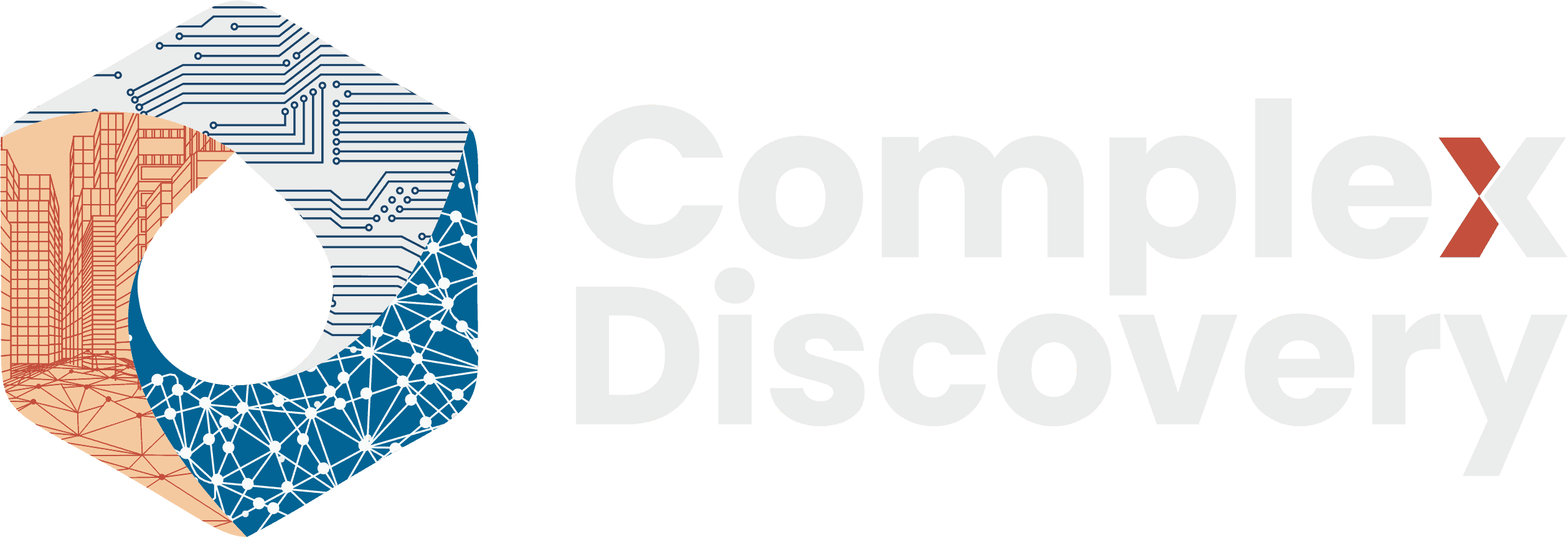Editor’s Note: The United States is no longer waiting to shape the future of artificial intelligence—it’s moving with purpose. On January 23, the White House unveiled America’s AI Action Plan, a sweeping national doctrine designed to secure U.S. dominance in artificial intelligence across economic, security, and diplomatic fronts. This is not a distant roadmap—it’s an operational mandate already in motion, with more than 90 policy actions aimed at deregulating innovation, fortifying digital infrastructure, and embedding American values into global AI standards.
For cybersecurity professionals, the plan introduces aggressive measures to harden federal systems against AI-specific threats, mandate secure-by-design development, and establish a dedicated AI Information Sharing and Analysis Center (AI-ISAC). For those in information governance and eDiscovery, it signals new protocols for AI-generated content, a push for forensic benchmarks to counter deepfakes, and rising expectations for evidentiary integrity in the age of synthetic media.
What emerges is a strategic alignment of public and private capabilities—where AI is not only a tool but a terrain of competition. As federal agencies and global partners shift into execution mode, this Action Plan challenges every organization to assess its own AI posture.
Content Assessment: America’s AI Action Plan Sets the Stage for Global Technology Power Play Governance
Information - 94%
Insight - 93%
Relevance - 95%
Objectivity - 93%
Authority - 94%
94%
Excellent
A short percentage-based assessment of the qualitative benefit expressed as a percentage of positive reception of the recent article from ComplexDiscovery OÜ titled, "America’s AI Action Plan Sets the Stage for Global Technology Power Play Governance."
Industry News – Artificial Intelligence Beat
America’s AI Action Plan Sets the Stage for Global Technology Power Play Governance
ComplexDiscovery Staff
The United States is not watching the AI revolution unfold from the sidelines. In a move charged with national ambition and geopolitical urgency, the White House formally unveiled America’s AI Action Plan this week—a sweeping framework designed to secure global AI dominance through a combination of deregulation, infrastructure expansion, and international technology diplomacy.
Emerging just six months after President Donald J. Trump signed Executive Order 14179, titled “Removing Barriers to American Leadership in Artificial Intelligence,” the plan is now the official doctrine guiding federal AI policy. At its core, the Action Plan declares that American leadership in AI is not just an economic aspiration but a national security imperative.
Framed as the next great race for global power—one likened to the space race of the 20th century—the plan anchors itself in three pillars: accelerating innovation, building American AI infrastructure, and leading in international diplomacy and security. The administration’s goals are as bold as they are numerous. Over 90 policy actions are mapped across these categories, each designed to catalyze AI’s transformative potential while protecting American interests.
The announcement, paired with the official White House statement on July 23, made clear that this is not a plan for the distant future—it is a checklist in motion. Federal agencies are expected to begin execution within weeks. The language of urgency ran through statements from top officials.
“Winning the AI Race is non-negotiable,” said Secretary of State and Acting National Security Advisor Marco Rubio. “President Trump recognized this at the beginning of his administration and took decisive action by commissioning this AI Action Plan. These clear-cut policy goals set expectations for the Federal Government to ensure America sets the technological gold standard worldwide, and that the world continues to run on American technology.”
That notion of technological hegemony threads through the Action Plan’s detailed proposals. On the domestic front, the administration pledges to remove what it describes as “onerous” federal regulations that hinder AI development and deployment. Through the Office of Management and Budget and the Office of Science and Technology Policy (OSTP), agencies will evaluate and repeal guidelines, consent decrees, and memoranda that limit innovation. The message is clear: government should accelerate, not regulate, the future.
Simultaneously, the plan calls for updating procurement policies to contract only with frontier large language model developers whose systems are demonstrably objective and free from what the plan refers to as “top-down ideological bias.” In doing so, the administration aims to embed American values—especially free speech—into the DNA of AI systems procured with federal funds.
AI’s global diffusion is being equally orchestrated. Under the plan, the Commerce and State Departments are tasked with partnering with industry consortia to deliver “secure, full-stack AI export packages.” These packages are not limited to models or software, but include hardware, standards, and support—essentially, an American-branded AI ecosystem to be deployed among allies. This strategy extends beyond technology; it’s an assertion of influence designed to undercut adversaries’ reach and shape the norms of the AI era.
David Sacks, AI and Crypto Czar at the White House, underscored the geopolitical dimensions: “Artificial intelligence is a revolutionary technology with the potential to transform the global economy and alter the balance of power in the world. To remain the leading economic and military power, the United States must win the AI race.”
Yet while the AI Action Plan speaks to innovation and diplomacy, it places cybersecurity and information integrity at the heart of infrastructure development. The plan proposes hardening the U.S. digital backbone with high-security data centers for the military and intelligence community, creating a new AI-focused Information Sharing and Analysis Center (AI-ISAC), and expanding federal incident response playbooks to account for AI-specific vulnerabilities. Agencies are directed to ensure all AI systems—particularly those used in critical infrastructure—are secure-by-design, monitored for adversarial manipulation, and ready for rapid intervention.
This focus has direct consequences for professionals in cybersecurity and information governance. The Action Plan outlines a vision where AI is not just integrated into defense systems or agency operations, but where its resilience becomes a frontline requirement. The AI-ISAC, a collaborative hub to facilitate real-time threat intelligence exchange, reflects growing concerns that AI could itself be the vector for attacks—whether through data poisoning, adversarial model inputs, or foreign-sourced backdoors.
The private sector is also expected to participate. Federal contracts will increasingly require security standards around AI development, and companies will need to align with new export control policies to protect sensitive technologies. This shift signals a rebalancing: where once innovation was a private race, now it’s a public-private alliance with national stakes.
What may prove most disruptive, however, is the plan’s prioritization of energy and labor infrastructure. Recognizing that AI demands far exceed current national energy capacity, the White House is pushing for a massive expansion in grid modernization, streamlined permitting for data centers, and accelerated training for infrastructure occupations such as electricians and HVAC specialists. This is not merely policy—it is a full-scale mobilization of America’s industrial ecosystem in service of artificial intelligence.
Michael Kratsios, Director of OSTP, emphasized this holistic transformation: “This plan galvanizes Federal efforts to turbocharge our innovation capacity, build cutting-edge infrastructure, and lead globally, ensuring that American workers and families thrive in the AI era. We are moving with urgency to make this vision a reality.”
For professionals outside the United States, the implications are equally pronounced. The plan’s provisions on export controls and supply chain enforcement mean that access to U.S.-developed AI tools—models, chips, software—will be increasingly conditioned on diplomatic alignment and adherence to security protocols. Allies will be incentivized to adopt American standards, while rivals may find themselves technologically isolated. The plan references expanded use of the Foreign Direct Product Rule and secondary tariffs to enforce compliance, further extending American leverage.
Meanwhile, international governance bodies—from the G7 to the UN—are expected to see more assertive U.S. diplomacy aimed at shaping AI norms. The plan criticizes past multilateral efforts as overly regulatory or ideologically compromised, and pledges to promote innovation-driven frameworks that reflect what it describes as core American values.
For those in eDiscovery and digital evidence roles, another notable component of the plan is its call to combat AI-generated deepfakes through formal forensic benchmarks. NIST is encouraged to formalize its “Guardians of Forensic Evidence” program into a national guideline, creating a technical foundation for courts and law enforcement to identify and challenge manipulated media. This move could reshape evidentiary standards in digital litigation and compliance.
As the policy actions begin to roll out, what’s clear is that this plan represents more than a set of recommendations. It is the architecture of a new national posture toward artificial intelligence—one in which the U.S. seeks to lead not only in breakthroughs but in the rules of engagement.
The plan opened with a sweeping statement: AI would ignite a new industrial revolution, an information revolution, and a renaissance—all at once. It closes with a challenge just as clear: either America leads, or it is led by others.
That framing leaves professionals with an unavoidable question: As the United States places its flag firmly on the digital frontier, is your organization ready to meet this new standard of global AI readiness?
News Sources
- White House Unveils America’s AI Action Plan (The White House)
- White House unveils AI action plan targeting regulation and ‘ideological bias’ (Nextgov/FCW)
- Removing Barriers to American Leadership in Artificial Intelligence (The White House)
- Winning the AI Race: America’s AI Action Plan (The White House)
- Guardians of Forensic Evidence: Evaluating Analytic Systems Against AI-Generated Deepfakes (NIST)
Assisted by GAI and LLM Technologies
Additional Reading
- European Commission Unveils General-Purpose AI Code of Practice Ahead of AI Act Enforcement
- Strategic AI and the Shifting Role of IT in Enterprise Innovation
- BRICS Pushes for UN-Led AI Governance at Rio Summit
- Model Poisoning and Malware: GenAI’s Double-Edged Sword
- Legal Tech in the Loop: Generative AI and the New Frontiers of Responsibility
Source: ComplexDiscovery OÜ








































